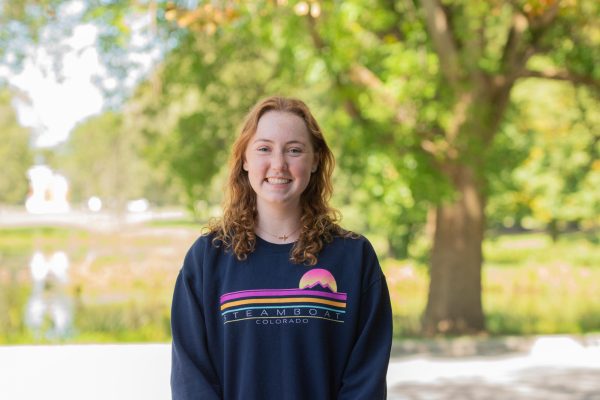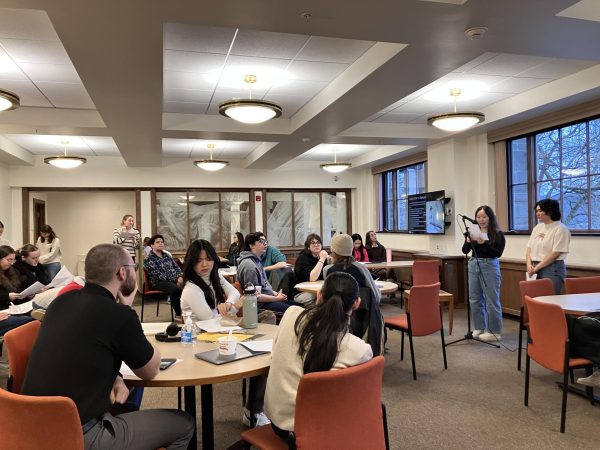Ho Tung Visualization Lab Presents ‘Skies Over Colgate’
Among the many perks students enjoy while going to school in the charmingly remote village of Hamilton, stargazing is quite underutilized. As the weather gets colder and winds get sharper, the Ho Tung Visualization Lab (Vis Lab) series “Skies Over Colgate” is an excellent opportunity to explore the stars, planets and galaxies around us. Admission is free, and local residents can join students for the 45-minute shows.
The “Skies Over Colgate” event this past Friday began with a discussion about the stars and constellations currently above Colgate University’s campus. After asking the audience a few questions, first-year and presenter Maria Vieira explained the meaning of each constellation name and associated imagery. She also discussed different historical and contemporary interpretations of constellations.
Vieira showed an outline of the Big Dipper constellation inside an outline of the larger Ursa Major constellation. She remarked about the Big Dipper’s mythical background.
“There are a couple of stories behind Ursa Major,” Vieira explained. “A pretty popular one is the Roman myth — a lot of our constellations are based on ancient Roman and Greek myths — so the Big Dipper, which is a part, again, of Ursa Major, is associated with a nymph named Callisto [who was] turned into a bear as punishment […] In Native American mythology, Native Americans saw the pots of the Big Dipper as a bear, and the handle made up of the three stars as hunters.”
Constellations are difficult to identify for most people, and sophomore Greta Hoogstra appreciated how the show located and mapped out some of the more famous celestial bodies.
“I thought it was really cool because there’s not a lot of light pollution here, so when you go outside you can see a lot of the stars,” Hoogstra said. “I don’t know the constellations really well, so that was cool, because you get to see some of them and you can find them in the sky.”
The presentation then went through the planets around Earth, with Vieira giving facts about each planet. She then zoomed out to educate viewers about star clusters and the Milky Way galaxy.
“With a powerful enough telescope, like the one at Foggy Bottom — which is just right up the hill — you can still see remnants of the supernova and remnants of the fiery explosion,” Vieira said.
As the images on the dome overhead zoomed out to show thousands of galaxies, the University’s amazing technological infrastructure was on full display. As incredible as the Vis Lab dome was, technology was not the most notable part of the presentation. Rather, the unimaginable infinity of the universe was neither possible to ignore nor fully comprehend.
Ho Vis Lab shows are geared toward astronomy students, astrology nerds and philosophy concentrators who want to feel the full weight of their comparative insignificance in the universe. It is impossible to fully grasp the depth and size of our galaxy, our universe, our cosmos. There is a breathtaking weight of knowledge upon the realization of how small, how insignificant, we are, in relation to the rest of existence. Regardless of viewer takeaway, “Skies Over Colgate” was full of interesting information about stars, planets and beyond.
Senior Hosea Ned enjoyed the depth of information presented in the show and found it interesting to broaden his scope of this field of information.
“I think it was a really good talk. I find it interesting whenever you have a kind of general understanding of certain, I guess things in the sky, and then you have other little facts that you find out as well that brings it around to make it full circle,” Ned said.

LJ Coady is a junior from Houston, TX concentrating in political science with minors in history and religion. She has previously served as a writer for...






